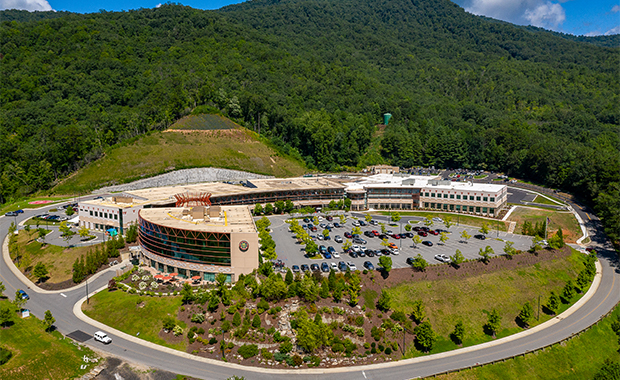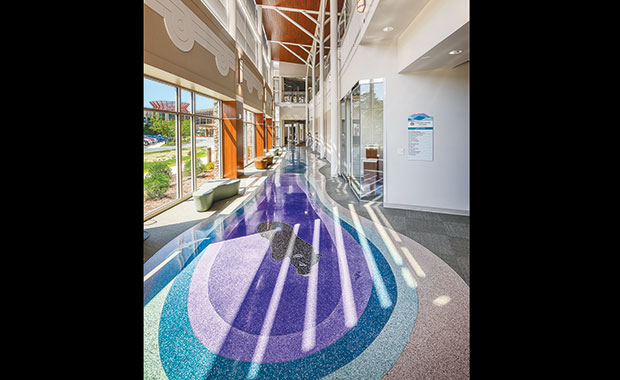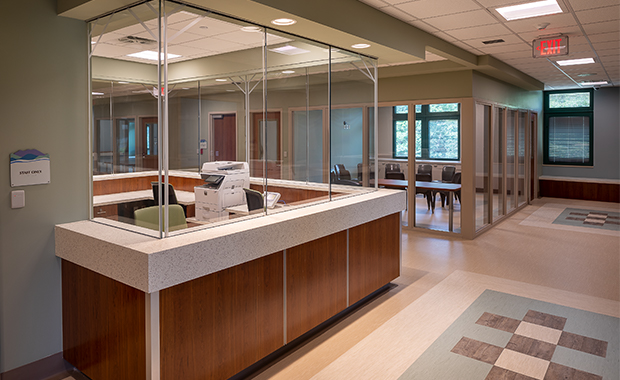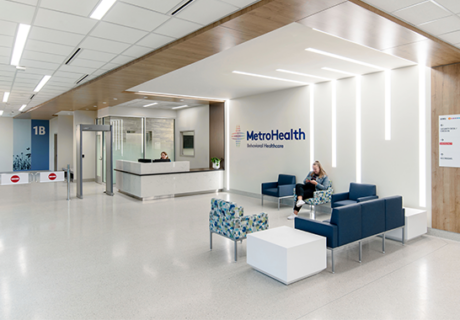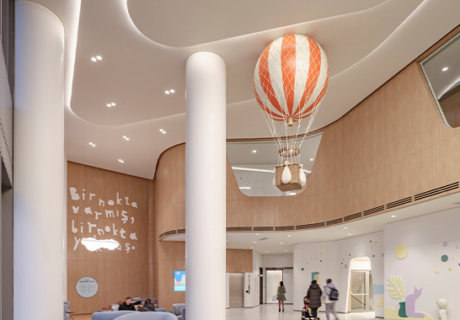Missing Piece: Cherokee Indian Hospital, Phase II – Behavioral Health and Crisis Stabilization Unit Addition
The Cherokee Indian Hospital Authority (CIHA) in Cherokee, N.C., sought to provide more streamlined care for members of the Eastern Band of Cherokee Indians (EBCI) who require mental, behavioral, or emotional health or substance abuse services. To help achieve that goal, the organization built a replacement facility for its Cherokee Indian Hospital in 2015, where crisis care is provided in the emergency department (ED), followed in 2018 by Kanvwotiyi, a 20-bed residential treatment center in Graham County, N.C., which houses inpatient treatment and programs for adults. But a void remained: a secure, safe environment where these patients could be stabilized before being transferred from the hospital to residential care. The solution would help alleviate the prolonged use of ED beds for inpatient behavioral health needs and provide a designated space for mental health care services. “It was decided that if we really wanted to help and provide treatment for this community, we needed an entire continuum of services,” says Casey Cooper, CEO of CIHA.
CIHA decided to build an addition on campus, but the former 1970s-era hospital stood in the way, with part of the vacated building still being used for administrative and storage space. Working with architecture firm McMillan Pazdan Smith Architecture (Charlotte, N.C.) and construction management firm Robins & Morton (Birmingham, Ala.), leadership next considered demolishing the 77,000-square-foot hospital but soon realized it would be too expensive. Instead, says Josh Farr, superintendent at Robins & Morton, the team ultimately opted to tear down only part of the building, salvaging and renovating 34,000 square feet for continued administrative use and adding 43,000 square feet to create an outpatient clinic and crisis unit that connects to the main hospital—a move that saved approximately $1 million.
Opened in June 2020, the addition’s first floor houses a behavioral health outpatient clinic with 13 counseling rooms, an exam room, small and large group rooms, and two large classrooms. The second-floor crisis stabilization unit comprises 18 inpatient rooms for behavioral health patients, four acute-care patient rooms that are equipped to support someone in a health crisis, and two large group therapy rooms.
To ensure the building fit in on campus and reflects the EBCI culture, the project team met regularly with a committee of tribal members and elders to seek input. “Exterior cultural symbols, materials, and elements match the Cherokee Indian Hospital seamlessly to convey the message that the programs contained inside are equally important to the mission and vision of the facility,” says Christie Adams, healthcare segment leader and project manager at McMillan Pazdan Smith Architecture. For example, the design of the terrazzo flooring in the entry area and main corridor at the hospital illustrates a local legend—a detail that’s carried into the new addition with the legend of a magic lake represented in the flooring. On the exterior, a unique motif depicting the symbol for wind matches the new hospital’s exterior. “The addition looks like it has always been a part of the campus,” Farr says.
Project details:
Project name: Cherokee Indian Hospital, Phase II – Behavioral Health and Crisis Stabilization Unit Addition
Location: Cherokee, N.C.
Project completion date: June 2020
Owner: Cherokee Indian Hospital Authority
Total building area: 80,000 sq. ft.
Total construction cost: $36 million
Cost/sq. ft.: $469
Architecture: McMillan Pazdan Smith
Interior design: McMillan Pazdan Smith
General contractor: Robins & Morton
Engineering: RN&M (mechanical), 4D Engineering (civil), SKA Consulting Engineers (structural)
Builder: Robins & Morton
Art consultant: Eastern Band of Cherokee Indians
Art/pictures: Eastern Band of Cherokee Indians
Carpet/flooring: McMillan Pazdan Smith
Fabric/textiles: McMillan Pazdan Smith
Furniture—seating/casegoods: McMillan Pazdan Smith

